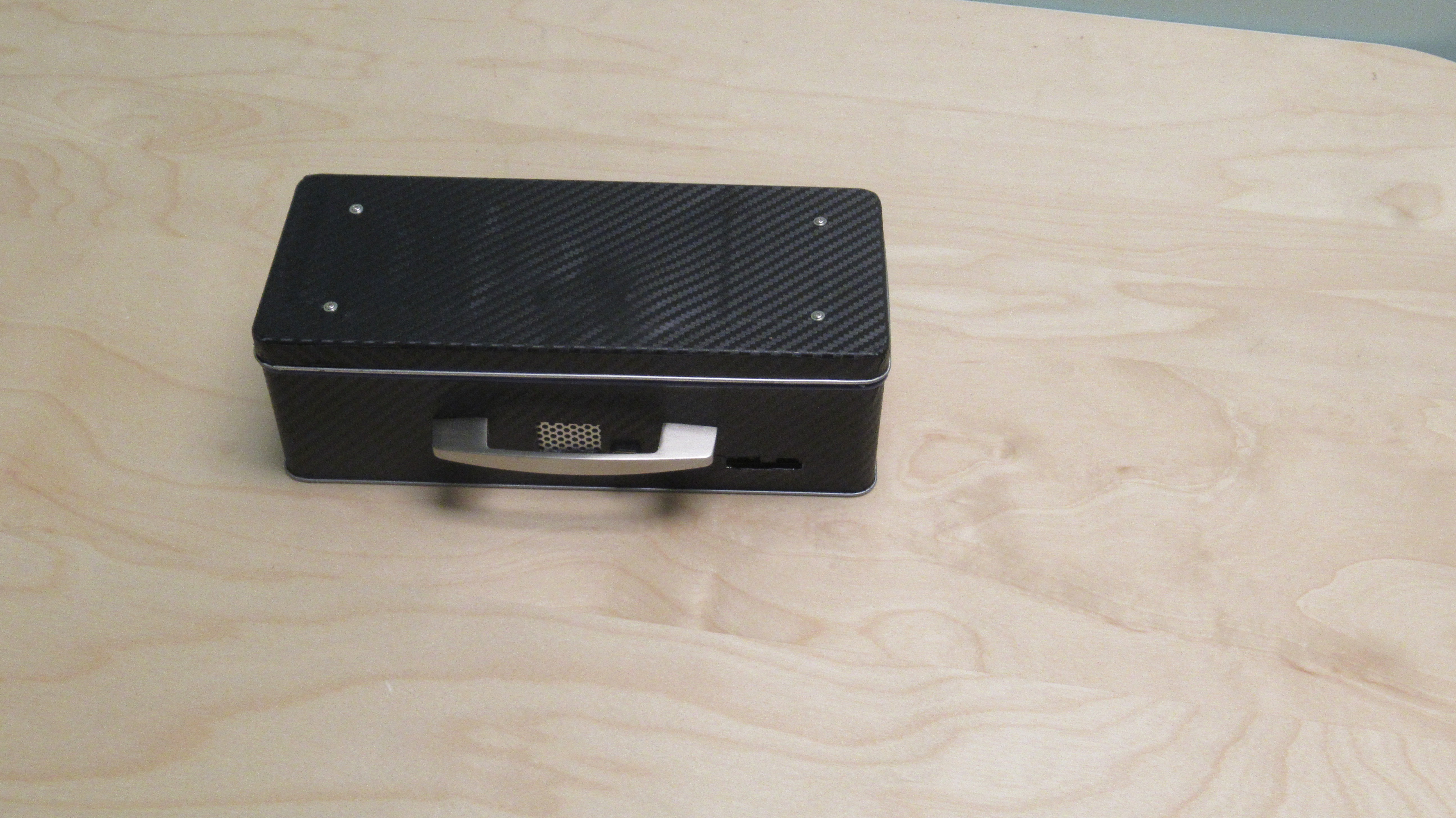-
11Power Keyboard Using GPIO Pins (optional)
If the Bluetooth keyboard's battery is still good, you can just use it as is. But in my case, it was dead, so I decided to get power from the Pi's GPIO pins. Since the keyboard's battery is 3.7V, I used a +5V GPIO pin and dropped the voltage to acceptable levels using two diodes in series. Dupont jumper wires were soldered to the positive and negative pads on the keyboard controller. The positive wire was connected to a +5V GPIO pin and the negative wire to a GND pin.
-
12Cover Box with Carbon FIbre Wrap
Wrap box and bezel with carbon fiber vinyl wrap. Use a heat gun or hair dryer to soften the wrap to make it conform to corners and curves.
-
13Mount Keyboard in Lid of Tin Box
Drill four holes in the lid of the tin box and attach the keyboard with wooden spacer to the lid with screws.
-
14Connect the Power Bank to the Raspberry Pi
Use a short USB-A to USB-C cable to connect the output port of the power bank to the Raspberry Pi's USB-C port. (See the project log for a cable with an on/off switch to conserve the power bank.)
-
15Add Stylus
Attach one end of a coiled cable to the side of the wooden spacer for the keyboard and the other end to the stylus. The coiled cable I used was just something I had lying around. I'm not sure where it originally came from.

Discussions
Become a Hackaday.io Member
Create an account to leave a comment. Already have an account? Log In.